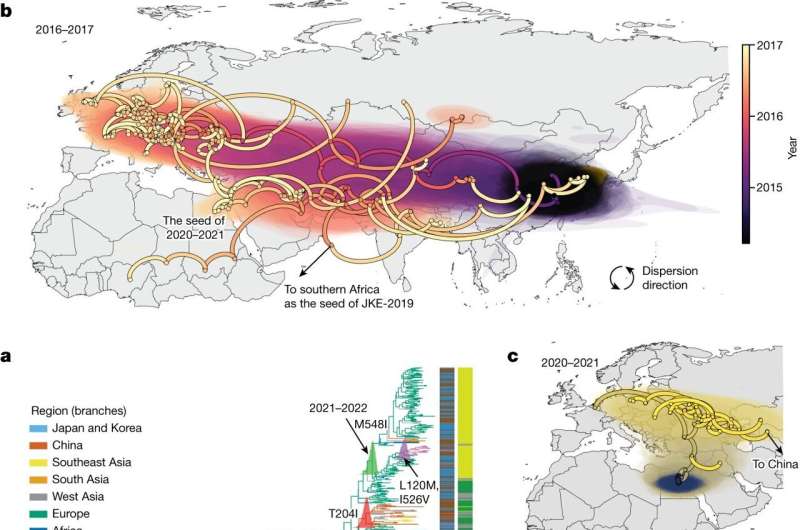Current bird flu epidemic found to have originated in Europe and Africa

An international team of biologists, public health specialists and infectious disease experts reports that the current near-global bird flu epidemic has its roots in Europe and Africa. In their study, published in the journal Nature, the group analyzed bird flu data from multiple animal health databases.
Going back to 2020, infectious disease experts have found a new strain of the H5N1 bird flu virus in both wild and domestic birds. Since that time, infections have spread to every place on Earth except Oceania and Antarctica. Thus far, it is the worst bird flu outbreak in Europe's history and has killed record numbers of birds in many other countries. It has also been found to jump to other animals, including humans—to date, it has killed 458 people.
Fortunately, while the virus can leap from birds to humans, it has not yet evolved the ability to jump between people. In this new effort, the research team sought to find the origins of the new outbreak by analyzing information in databases of statistics about animals, including bird deaths, around the globe.
The data came from two massive databases, one maintained by the World Organization for Animal Health and another by the United Nation's Food and Agriculture Organization. The team also obtained genetic information from several entities that have been tracking bird deaths due to bird flu from multiple sites around the world.
The researchers found that a major shift has occurred with bird flu—where once new strains almost always originated in Asia, the new variant came from Africa and Europe. They found that it was a new variant of H5N1, the strain that originated in China back in mid-1990s. Genetic analysis showed that the new version of the variant had originated in north Africa as H5N8. As it moved to Europe, it evolved to H5N1, where it become more virulent, resulting in massive bird losses. Since that time, it has spread to most of the rest of the world.
The researchers suggest that the evolutionary path of the virus represents a major shift in bird flu evolution—one that will require a new approach by officials and health experts hoping to quash the outbreak before the virus adapts to jump between humans, and before the next new strain arrives.
More information: Ruopeng Xie et al, The episodic resurgence of highly pathogenic avian influenza H5 virus, Nature (2023). DOI: 10.1038/s41586-023-06631-2
Journal information: Nature
© 2023 Science X Network
No comments:
Post a Comment